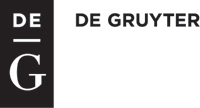Forest fires in Dalmatia
Authors
Keywords
forest fires, Croatia, Dalmatia, Mediterranean forest
Abstract
Every year the Republic of Croatia, especially in its south part in Dalmatia, faces forest fire risks. The weather is exceptionally conducive to fires, so the main period of fire occurrences is between June and October, characterized by long lasting dry and warm weather with temperatures over 30oC. Research carried out by the authors in 1997 and 2012 have pointed to the fact that human impact is the main cause of ignition. This paper presents an overview of the total number of fires in the period from 1998 to 2012, with the emphasis on forest and woodland fires in the Croatian region of Dalmatia. Data on the situation in Dalmatia refer to the situation in the areas of responsibility of four Dalmatian Police Administrations. Analysis is based on official data of the Croatian Ministry of the Interior and the report of the National councillor for managing and controlling forest fires. The authors have analysed the frequency of forest fires in Dalmatia in a period of fourteen years (1998-2012) comparing it with the previous period, 1989-1996. The results that the authors have obtained reveal how forest fires most commonly (2/3) break out during the warm part of a day, from 09.00 until 18.00 hours in the warm period of the year. Particularly vulnerable are the forests of Aleppo pines and maquis being mostly thermal forests, whilst in the south of the country the forests of Holm oak (Quercus ilex) and English oak (Quercus robur) are at the highest risk. Reforesting of burned areas is very slow and Croatia has been far behind in reforesting in the continental part of the country.
Pages:
117-130
DOI:
10.1515/bog-2016-0019
 Download PDF
Download PDF

